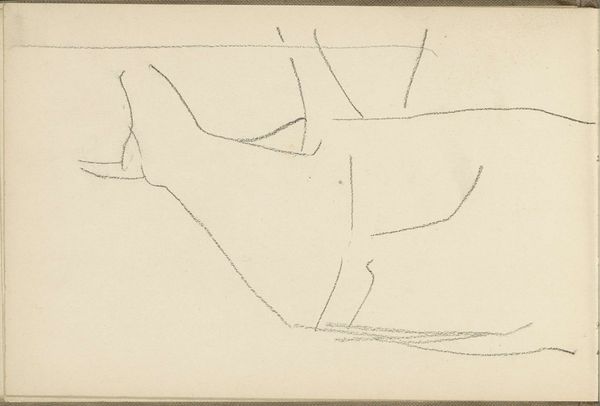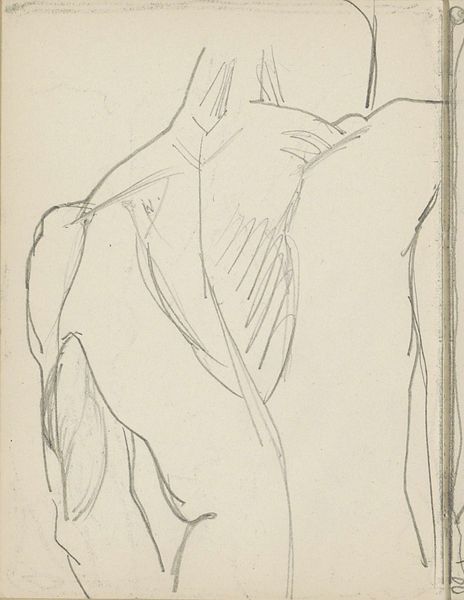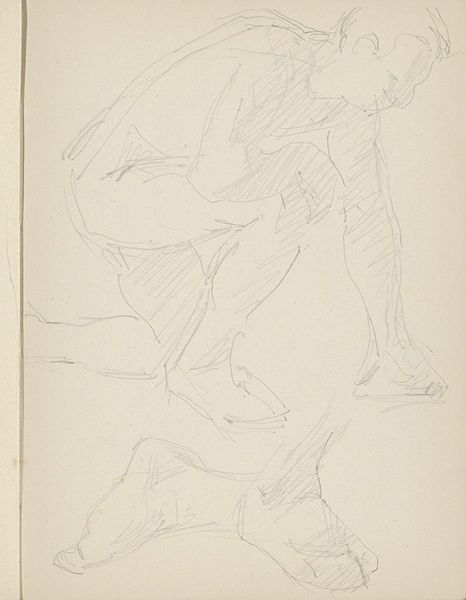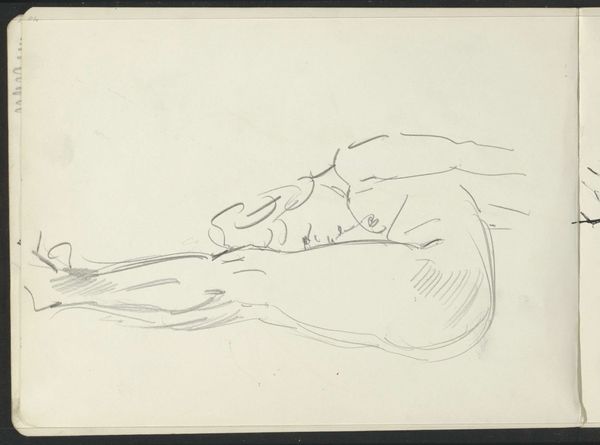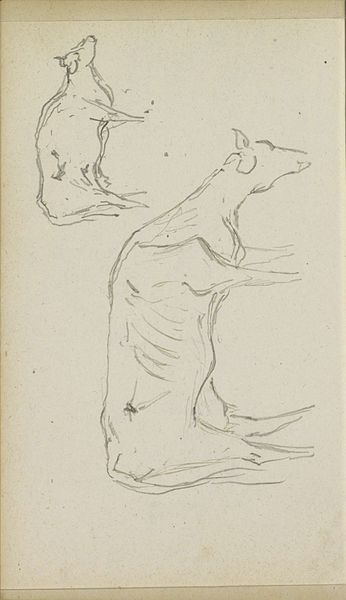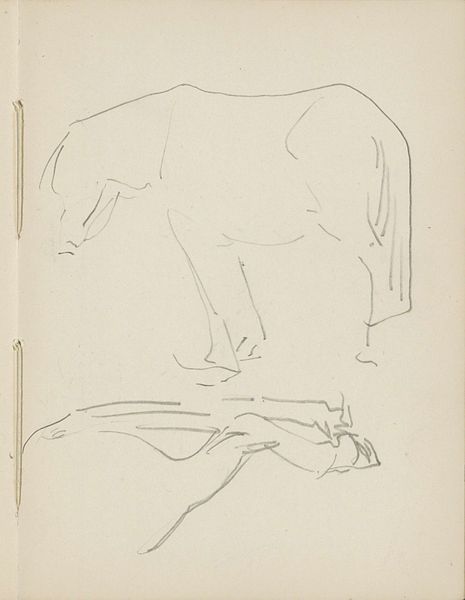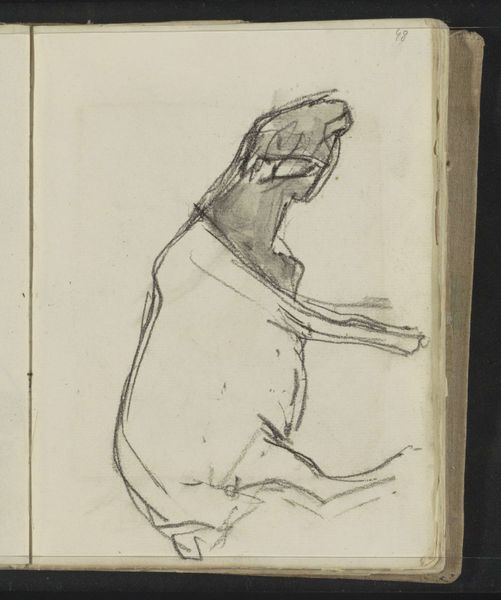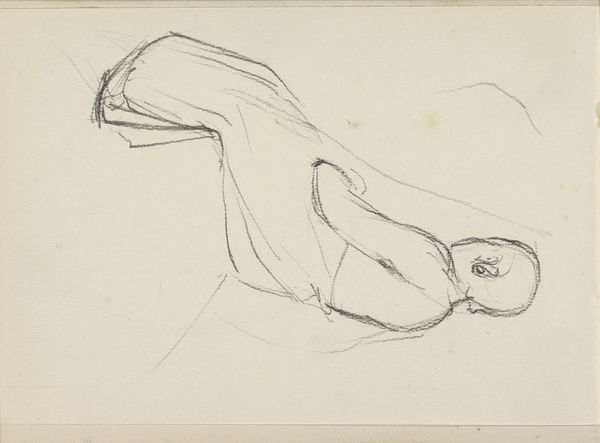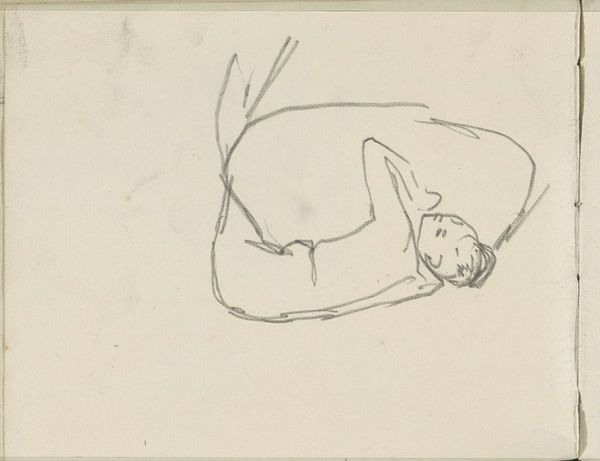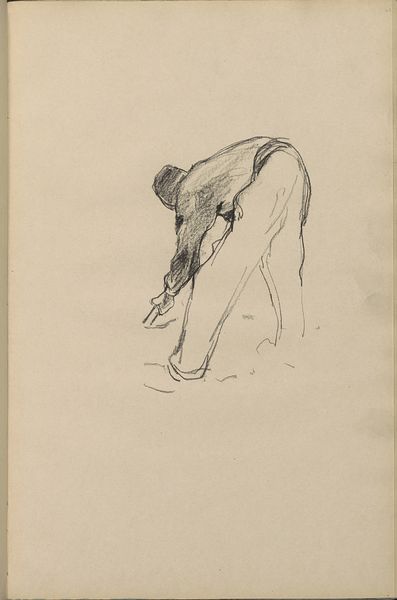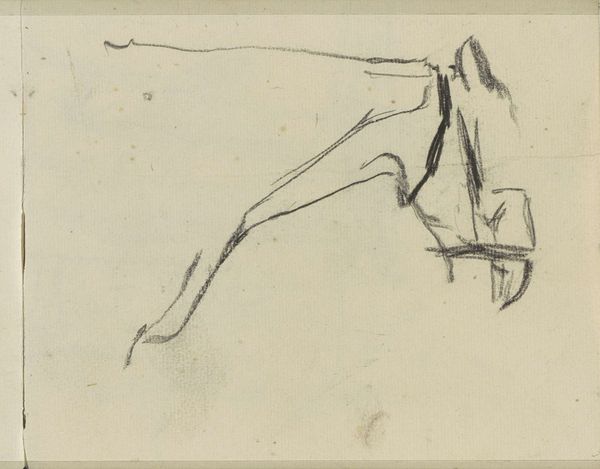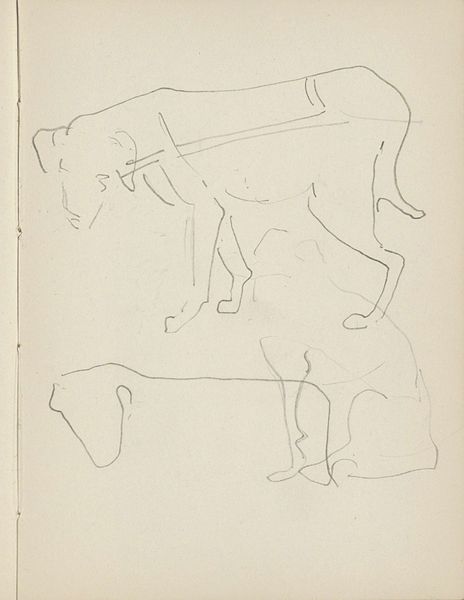
drawing, paper, gestural-painting, pencil, graphite
#
drawing
#
amateur sketch
#
light pencil work
#
thin stroke sketch
#
animal
#
pencil sketch
#
landscape
#
figuration
#
paper
#
form
#
personal sketchbook
#
gestural-painting
#
idea generation sketch
#
ink drawing experimentation
#
pen-ink sketch
#
pencil
#
horse
#
graphite
#
sketchbook drawing
#
initial sketch
Copyright: Rijks Museum: Open Domain
Editor: This unassuming pencil drawing, "Paard," from somewhere between 1906 and 1945 and held here at the Rijksmuseum, feels so raw. You can almost feel the artist working to capture the weight of the animal with such simple lines. What do you see when you look at it? Curator: I'm drawn to the stark simplicity. Look at the materiality—the graphite on paper. The artist wasn't aiming for realism; it's more about the process of observation and recording a fleeting moment. How do you think the means of production, just pencil and paper, influence its message? Editor: That's a great point! Because it's so minimal, it feels incredibly immediate, like a direct connection to the artist’s hand and eye. There's no barrier of elaborate technique. Curator: Exactly. And think about the social context: during that time, drawing was seen both as a preliminary step for ‘high art,’ painting or sculpture, but also as its own art form, available even to amateur artists to pursue art creation. Does viewing it in the Rijksmuseum elevate or alter the artwork to what you expected? Editor: I hadn't considered that duality. Displaying it here definitely lends it a certain significance that maybe the artist didn’t intend. If this were a personal sketchbook drawing, as is tagged, then the act of labor involved, of taking an amateur sketch into an established museum alters it. Curator: The material constraints—the humble materials, the probable speed of execution—speak volumes about artistic accessibility. Considering our talk about means of production and consumption, it is no longer available in an amateur's hands but on display for those of a high art consumption. It democratizes art. What I appreciate is how it allows us to consider what labour went into it from all levels, be it the graphite manufacturer or the artist that produced the artwork on the material. What do you take from that? Editor: I think I initially undervalued this drawing, seeing it only for its subject. But now I'm so curious about how everyday materials and their contexts can drastically shape our view. Curator: Absolutely, thinking materially about art helps us move past purely aesthetic judgements, pushing us to examine who makes art, and how and why.
Comments
No comments
Be the first to comment and join the conversation on the ultimate creative platform.
